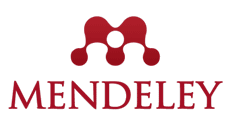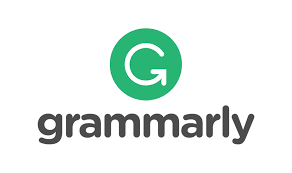Penerapan Metode SQ3R Disertai Media Cerita Bergambar pada Keterampilan Membaca Siswa SD
DOI:
https://doi.org/10.57176/jn.v1i2.6Keywords:
membaca pemahaman, metode SQ3R , media cerita bergambarAbstract
Tujuan dari penelitian ini adalah untuk mengetahui perencanaan, proses, respon siswa dan kendala yang dihadapi dalam penerapan metode SQ3R disertai media cerita bergambar pada pembelajaran membaca pemahaman kelas IV SD. Penelitian ini merupakan penelitian deskriptif kualitatif yang dilaksanakan dikelas IV SDN 03 Baosan Lor, Ponorogo dengan jumlah siswa sebanyak 31. Metode pengumpulan data yang dilakukan yaitu observasi, wawancara, kuosioner dan dokumentasi. Analsis data menggunakan model Milles and Huberman yaitu reduksi data, penyajian data dan penarikan kesimpulan. Hasil penelitian ini menunjukkan bahwa Perencanaan pembelajaran seperti silabus, RPP dan media tersusun dan terrencana dengan baik. Proses pembelajaran menciptakan kondisi suasana yang efektif, berjalan dengan lancar dan menyenangkan, siswa merespon pembelajaran dengan respon sangat positif, dan kendala yang dihadapi yaitu alokasi waktu kurang maksimal, dan terdapat 2-3 orang siswa yang kesulitan dalam mengkuti tahap pembelajaran karena masih bingung dan tidak memperhatikan guru saat proses pembelajaran.
The purpose of this study was to study he planning, processes, student responses and solutions related to the application of the SQ3R method. This research was a qualitative descriptive study carried out in class IV SDN 03 Baosan Lor, Ponorogo with a total of 31 students. The data collection methods used were observation, interviews, questionnaire and documentation. Data analysis used the Milles and Huberman model, namely data reduction, data presentation and conclusions. The results of this study indicated that planning studies such as syllabus, lesson plans and media are well organized and planned. The learning process that created an effective atmosphere, runs in a fun and enjoyable way, students who provide learning with very positive responses, and discussions that were less enjoyable, and involve 2-3 students who have difficulty in following learning activities because they were still confused and not pay attention to the teacher during the learning process.
References
Atikah, I. Iswara, PD. & Hanifah, N. (2017). Penerapan metode survey, question, read, recite, review (SQ3R) dengan permainan pos pelangi untuk meningkatkan kemampuan menyimpulkan isi cerita anak yang dibaca. Jurnal Pena Ilmiah. 2(1)
Amaliah, RR. Fadhil, A. & Narulita, S. (2014). Penerapan metode ceramah dan diskusi dalam meningkatkan hasil belajar PAI di SMA Negeri 44 Jakarta. Jurnal Studi Al-Qur’an. 10(2)
Bua, Mety T. (2016). Analisis minat baca permulaan dengan cerita bergambar dikelas 1 SD. Jurnal Penelitian Dan Pengembangan. 1 (9)
Dalman. (2013). Keterampilan membaca. Jakarta: Raja Grafindo Persada
Khasanah, A. & Cahyani, I. (2016). Peningkatan kemampuan membaca pemahaman dengan strategi question answer relationships (qar) pada siswa kelas v sekolah dasar. Jurnal Pedagogik Pendidikan Dasa. 4(2)
Krismanto, W. Khalik, A. & Sayidiman. (2015). Meningkatkan Kemampuan Membaca pemahaman MelaluiMetode survey, Question, Read, Recite, Review (SQ3R) Padasiswa kelas V SD Negeri 46 Parepare. Jurnal Publikasi Pendidikan. 5(3)
Nadzifah, W. (2016). Meningkatkan keterampilan membaca pemahaman menggunakan metode sq3r siswa kelas IV SDN Katongan I. Jurnal PGSD
Nawawi, H. dan Martini, M. (1996). Penelitian terapan. Yogyakarta: Gajahmada University Press
Nurani, H.I., Suhita R, & Suryanto E. (2017). Peningkatan kemampuan membaca cepat dengan metode SQ3R pada siswa SD. Jurnal Penelitian Pendidikan. 20(1)
Peraturan Menteri Pendidikan Dan Kebudayaan No. 22 Tahun 2016. Tentang Standar Proses Pendidikan Dasar Dan Menengah. 2016
Putri, C.A. Putra, S. & Zulaikha S. (2014). Pengaruh metode pembelajaran SQ3R terhadap hasil belajar bahasa indonesia kelas V SD. Jurnal Mimbar PGSD. 2(1)
Downloads
Published
How to Cite
Issue
Section
License
Copyright (c) 2022 Endang Sri Maruti, Dewi Lailatul Karoma

This work is licensed under a Creative Commons Attribution-ShareAlike 4.0 International License.
You are free to:
- Share — copy and redistribute the material in any medium or format for any purpose, even commercially.
- Adapt — remix, transform, and build upon the material for any purpose, even commercially.
- The licensor cannot revoke these freedoms as long as you follow the license terms.
Under the following terms:
- Attribution — You must give appropriate credit , provide a link to the license, and indicate if changes were made . You may do so in any reasonable manner, but not in any way that suggests the licensor endorses you or your use.
- ShareAlike — If you remix, transform, or build upon the material, you must distribute your contributions under the same license as the original.
- No additional restrictions — You may not apply legal terms or technological measures that legally restrict others from doing anything the license permits.
Notices:
You do not have to comply with the license for elements of the material in the public domain or where your use is permitted by an applicable exception or limitation .
No warranties are given. The license may not give you all of the permissions necessary for your intended use. For example, other rights such as publicity, privacy, or moral rights may limit how you use the material.
















